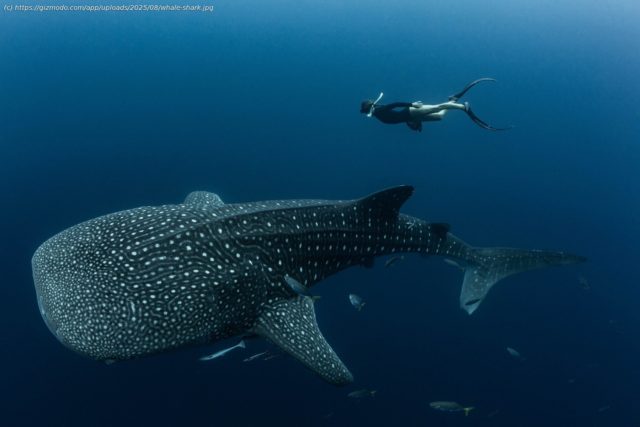Whale sharks are getting brutalized by tourists and fishers, new research shows.
The world’s largest living fish has plenty to fear from people. New research shows that a large proportion of whale sharks at a popular and protected tourism region bear scars caused by human activity.
A large group of marine scientists examined more than a decade’s worth of whale shark sightings in the Bird’s Head Seascape off Indonesia. Among other things, they found that over half of the sharks had injuries attributable to humans. Many of these injuries were preventable, the researchers say, and simple measures can be taken to ensure the safety of these gentle giants moving forward.
“[The] high percentage of injured whale sharks shows that even in protected zones, the whale shark interactions with fishing gear and tourism still pose risks to them,” study author Edy Setyawan, lead conservation scientist at the Elasmobranch Institute Indonesia, told Gizmodo.An endangered giant
Befitting its nickname, the whale shark (Rhincodon typus) is certainly hefty.
As adults, they commonly reach lengths between 30 and 40 feet (9 and 12 meters) and usually weigh around 18 tons; some get even larger. Despite their size, though, they’re no ferocious sea monster. These slow-moving fish are filter feeders that suck up their meals from the surrounding water. Though they can eat large and small marine organisms alike, they typically stick to microscopic plankton.
Whale sharks can be found in warm and tropical waters all over the world, but their numbers have dwindled dramatically in recent decades, and they’re classified as an endangered species.
Start
United States
USA — software Nearly Every Whale Shark at This Tourist Destination Bears Human-Made Scars






